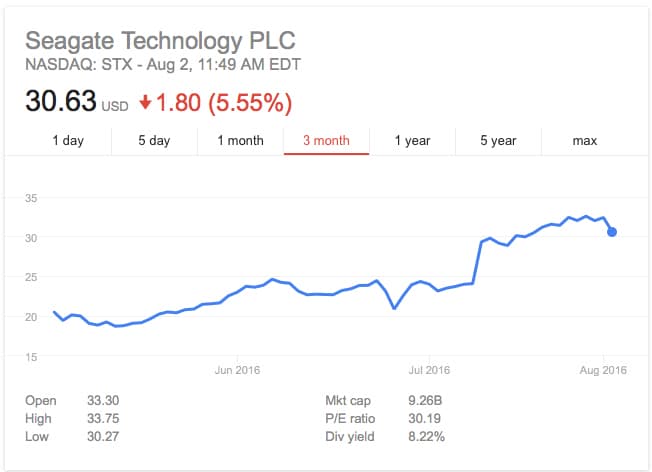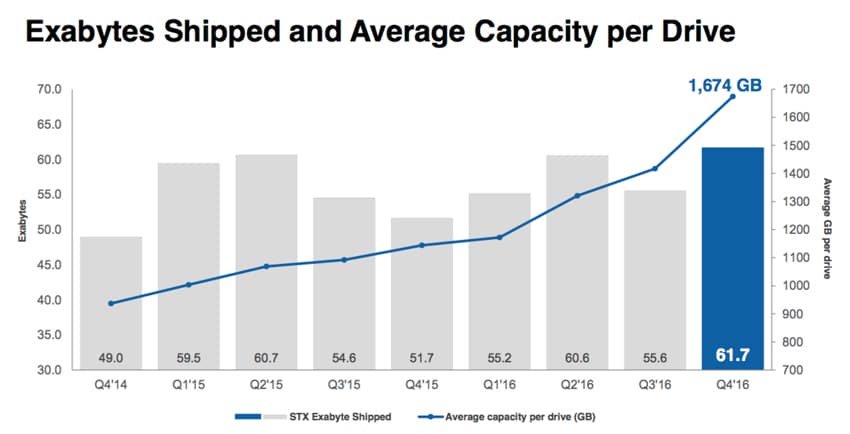Today Seagate Technology reported its results for both its fourth quarter and its fiscal year ending on July 1, 2016. Tech stocks have been on a bit of a bumpy path recently including Seagate. However the numbers reported today show a small increase pointing the company in a better direction. Seagate’s stock has been doing much better since their 3Q earnings were announced back in April.
Today Seagate Technology reported its results for both its fourth quarter and its fiscal year ending on July 1, 2016. Tech stocks have been on a bit of a bumpy path recently including Seagate. However the numbers reported today show a small increase pointing the company in a better direction. Seagate’s stock has been doing much better since their 3Q earnings were announced back in April.
Image courtesy of Google Finance
For this quarter Seagate is reporting a GAAP revenue of $2.7 billion, a gross margin of 24.9%, net income of $70 million (much better than their $21 million net loss last quarter), and diluted earnings per share (EPS) of $0.23. Seagate was also able to generate $269 million in operating cash flow and pay cash dividends of $188 million in the fourth quarter. For non-GAAP, Seagate reported revenue of $2.7 billion, a gross margin of 25.8%, a net income of $207 million and diluted EPS of $0.69.
Looking at the fiscal year, Seagate reported GAAP revenue of $11.2 billion, a gross margin of 23.4%, a net income of $248 million and diluted EPS of $0.82. Looking at the non-GAAP side of things, Seagate is reporting a gross margin of 24.6%, a net income of $684 million, and diluted EPS of $2.26. The company also states that they have generated approximately $1.7 billion in operating cash flow and paid cash dividends of $727 million. Seagate’s board of directors have also approved of a quarterly cash dividend of $0.63 per share, which will be payable on October 5, 2016 to shareholders of record as of the close of business on September 21, 2016.
Seagate has made some leaps and bounds over the last year. They have introduced several 10TB HDDs aimed at desktops, NAS, and surveillance. We were able to test their 10TB desktop drive and found it to be a strong write performer in IOMeter as well as a strong performer in our HTPC benchmark. Seagate also announced 10TB helium enterprise drives. While this is a big step forward in the land of HDDs, a concern we brought up was Seagate’s overall lack of flash. However Seagate seems to be rectifying this issue with announcements such as the industry’s first 2TB M.2 NVMe enterprise drive. It will be interesting to watch the company this year as it continues to make innovations in the HDD market while it expands its reach in the flash market.
Sign up for the StorageReview newsletter


